John McCone AEC CIA USAF C-119 C-123 Korean War scandal documents
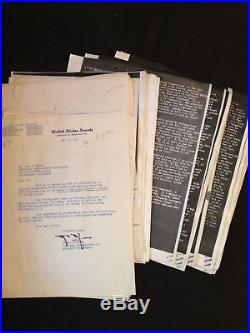
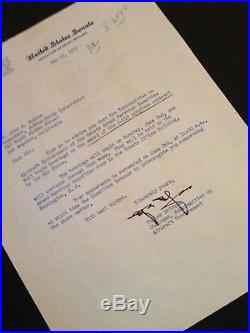


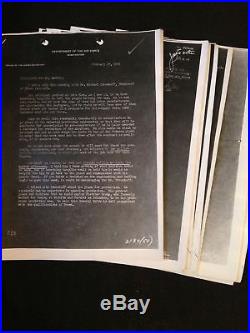
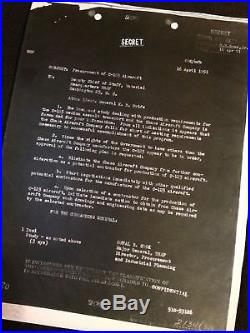
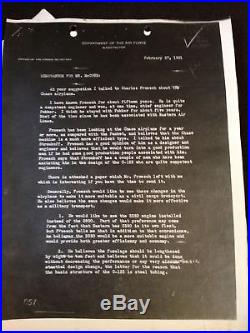
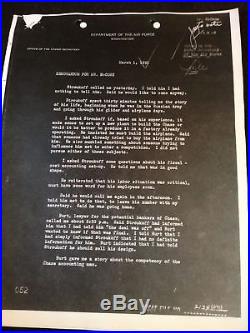
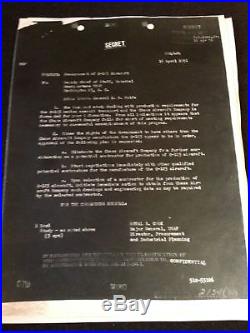
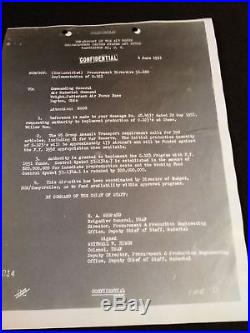
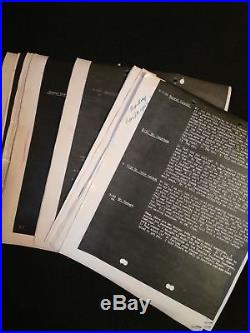
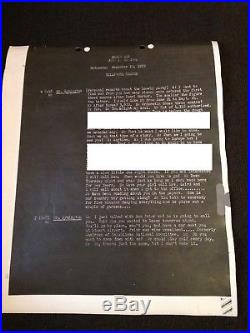

McCone, then Under Secretary of the USAF and the USAF C-123/C-119 aircraft scandal and cover up at some of the highest levels. Items are from his assistant's estate, Terry Lee. Several of the documents/photostats are of historical interest.
This in an unique insight into American politics and scandal for historians during the Truman administrations when was Under Secretary of the USAF. Reading these documents in very interesting in light of the fact that Symington was still guiding the USAF after he has resigned as Secretary of the USAF in 1950 over protest of a lack of funding for USAF. Considering modern world events it makes for an interesting comparison with the past and a great topic for a book. Letter/Supeona from the Committee on Armed Services dated 25 may 1953 to John A.McCone, then President of the Joshua-Hendy Corporation requesting his appearance be for Subcommittee on Aircraft Procurement in regard to the C-119 packet aircraft, as the Committee intends to interrogate you concerning the above matter. It is signed by Styles Bridges, Chairman, Subcommittee on Aircraft Procurement. These double-sided and single sided typed documents have normal toning with age including minor edge creasing. They have been two-hole punched. The logs cover various conversations between McCone, Stuart Symington, General Wolfe, General Asensio, Senator Olin Johnson, General Orval Cook, General Timberlake Edgar Kaiser, to name a few of the many.
Topics include not letting Symington down on the subject of a particular individual, back door negotiations on a strike at Wright aircraft, Chase Aircraft, Stroukoff pushing for a C-123 contract, C-119's, B-36's, aircraft engines, budget, funds, B-47, backdoor politics on the C-123, A-2 fire control and more. Memorandum's dated 23 Feb 51, 27 Feb 51, 1 Mar 51, 12 Mar 51, 21 Mar 51,16 Apr 51, 29 May 51, 31 May 51. These photostat memorandum's cover problems with Stroukoff and the Chase Aircraft Company contract and competition with Kaiser and Fairchild. Letters dated 4 Jun 51, 2 Aug 51. These photostat copies are procurement directives and cancellation contracts for the C-119 and C-123. Historians should keep in mind that these procurement directions favor Edgar Kaiser. One of the most in interesting has Stuart Symington asking McCone to Cook up a story.Lots of discussions on back door politics. Normal toning associated with age/storage.
Photostats/letters may have writing on them. Documents may have bent edges, corner scuffs, minor creasing, edge chips, and or tears. As a reminder I have tried to accurately describe the material listed.
If you have any questions please ask before purchasing. Normal wear and tear associated with age. Terrance M Lee was a personal assistant/associate to John McCone from the 1940's through at least the 1970's. This material is from Lee's estate and contains many personal documents, memo's, transcripts of conversations, on such topics as McCone's personal scandals, business dealings, USAF contracts, AEC material, important CIA studies and more.Why he kept it is your guess? Perhaps to write a tell all book, protection, or loyalty to his old boss.
John Alex McCone was born in Los Angeles on 4th January, 1902. A child of Scotch-Irish parents, he was raised a devout Roman Catholic. Where he met Stephen D. Bechtel, his future business partner. Following graduation, McCone found work at the Llewellyn Iron Works.He started off as a riveter but by the age of 26 he had become construction manager. In 1931 McCone was appointed sales manager for Consolidated Steel.
This group of businessmen included Henry J. In 1937, McCone left Consolidated Steel to join Bechtel and Kaiser. Initially they established the Bechtel-McCone Corporation.
Over the next few years the three men formed several companies with them taking it in turn to become the front man. In some cases, they remained silent partners in these business ventures.The first major customer of Bechtel-McCone was Standard Oil of California (Socal). The company obtained a contract to build Socals new refinery in.
It was the first of many refineries built by Bechtel-McCone. By 1939 the company had more than 10,000 employees and was building refineries, chemical plants and pipelines all over the world. In the summer of 1940 McCone and Stephen D.Bechtel had a meeting with Admiral Howard L. Vickery told the men he had received a telegram from the British Purchasing Commission (BPC) urgently requesting that the Maritime Commission arrange the building of 60 tankers to replace the ships the British had lost to German torpedoes.
At another meeting a few weeks later, Maritime Commission chairman, Admiral Emory S. Land, told Bechtel and McCone that: Besides building ships for the British, they would have to build them for the Americans as well. And Victory cargo ships, troop transports, the whole makings of a merchant navy. Confidently added that thousands of vessels would be needed as.
As a result of these two meetings, Bechtel, McCone and Kaiser built shipyards at. Several of their companies were involved in this project that became known as Operation Calship. This included Kaiser Company (78 ships).(140 ships) and Kaiser-Vancouver (118 ships). It was a terrible gamble because at that time they were relying on the predictions of Admiral Emory S.
However, Land was right and only a month after the Japanese attack on Pearl Harbor, the Maritime Commission awarded Calship its first shipbuilding contract. Within a year, Calship was employing over 42,000 workers at its shipyards.
In 1942 McCone and Stephen D. Obtained a contract to build aircraft at Willow Run in. The War Department agreed to pay all the companys costs plus 5 percent on work estimates presented by Bechtel-McCone every six months. A 300-acre factory was built and 8,000 employees hired to staff it.However, no aircraft were built. Employees were paid for doing nothing. A local man, George P.
Alexander, discovered details of this scam and collected affidavits from workers who admitted that they went in every day at 9.00, punched the time clock, then went home. Alexander filed suit against Bechtel-McCone in federal district court on 31st July, 1943. He claimed that the company had made many and various claims against the government of the. Or a department or officer thereof, knowing such claims to be false, fictitious or fraudulent. However, the judge dismissed the case.
The problem was with the contract, not the claims by Bechtel-McCone. As John McCone admitted to. Bechtel-McCone was also involved in another scandal concerning war contracts. The contract to do this was given to John McCone and Steve Bechtel. The terms of the contract were very unusual.
The Bechtel-McCone Corporation was guaranteed a 10% profit on the project. The other surprising thing about the Canol Project was that it was to be a secret contract. It seems that Somervell did not want anyone outside the War Department and the Bechtel-McCone Corporation to know about this deal. The reason for this is that Harold Ickes, as Interior Secretary and the head of the Petroleum Administration for War, should have been the person who oversaw this project. It was finished in May 1945. Less that a year after it was finished, the plant and pipeline was abandoned. Tommy Corcoran was not the only person arranging for people like McCone, Kaiser and Berchtel to obtain lucrative government contracts during the war.Simpson was a close friend of an interesting group of people including Allen Dulles, John Foster Dulles, Dean Acheson and William Donovan. In 1942 Simpson was recruited into the.
His official title was chief financial advisor for the U. His arrival brought even more contracts from the War Department. At the end of the Second World War the Bechtel-McCone company was brought to an end. John McCone now invested much of the profits he had made from war production in Pacific Far East Lines.
McCone was the majority stockholder but Henry J. Bechtel were also silent investors in this company.
McCone also formed a partnership with Henry Mercer, the owner of States Marines Lines, whose vast fleets operated in the. McCone and Bechtel were also directors of the Stanford Research Institute (SRI). McCone was also chief fund-raiser for the California Institute of Technology, whose scientists had been involved in the development of the atom bomb and were now involved in nuclear research. McCone took a keen interest in politics and was a fanatical anti-communist.McCone told his friends that the Soviets intended to achieve world domination. Stone described him as a rightest Catholic a man with holy war views. Simpson, chief financial officer to the various corporations owned by Stephen D.
Bechtel, introduced McCone to Allen Dulles at a meeting in 1947. It was at this time he became friends with William Knowland and Dwight D.
Truman appointed McCone as Deputy to the Secretary of Defense. According to Laton McCartney, despite his title it quickly became apparent that he was the departments real boss. In 1950 he became Under Secretary of the Air Force.
While in these posts McCone gave contracts to Standard Oil and Kaiser Aluminum, two companies in which he had financial connections. He was questioned by the US Senate in regard his personal business dealings in the awarding of USAF contracts.
McCone dodged the bullet and became head of the AEC under Eisenhower and later head of the CIA under Kennedy. McCone was an ardent Cold War warrior and in 1956 attacked the suggestion made by Adlai Stevenson that there should be a nuclear test ban. McCone, a strong supporter of Dwight Eisenhower, accused American scientists of being "taken in" by Soviet propaganda and of attempting to create fear in the minds of the uninformed that radioactive fallout from H-bomb tests endangers life. In 1958 President Dwight Eisenhower rewarded McCone by appointing him Chairman of the Atomic Energy commission. After the Bay of Pigs disaster, President John F.
As Director of the Central Intelligence Agency. Under pressure from right-wingers in the intelligence community, Kennedy appointed McCone as the new director of the CIA. It is assumed that McCone was informed of Executive Action. (a plan to remove unfriendly foreign leaders from power). However, McCone always denied any knowledge of this policy. This included the ZR/RIFLE project, a plot to assassinate Fidel Castro. The advantage of employing the Mafia for this work is that it provided CIA with a credible cover story. The Mafia were known to be angry with Castro for closing down their profitable brothels and casinos in.If the assassins were killed or captured the media would accept that the Mafia were working on their own. In April 1963 McGeorge Bundy suggested to President John F.
That there should be a "gradual development of some form of accommodation with Castro". In an interview given in 1995, Bundy, said Kennedy needed "a target of opportunity" to talk to Fidel Castro. Later that month Lisa Howard arrived in Cuba to make a documentary on the country. In an interview with Howard, Castro agreed that a rapprochement with Washington was desirable. On her return Howard met with the Central Intelligence Agency. On Howard's view that Fidel Castro is looking for a way to reach a rapprochement with the. " After detailing her observations about Castro's political power, disagreements with his colleagues and Soviet troops in Cuba, the memo concluded that "Howard definitely wants to impress the U. Government with two facts: Castro is ready to discuss rapprochement and she herself is ready to discuss it with him if asked to do so by the US Government. McCone was strongly opposed to Lisa Howard being involved with these negotiations with Fidel Castro. He argued that it might "leak and compromise a number of CIA operations against Castro". In a memorandum to McGeorge Bundy, McCone commented that the "Lisa Howard report be handled in the most limited and sensitive manner, " and that no active steps be taken on the rapprochement matter at this time. While McCone was director the CIA was heavily involved in the Congo, supplying mercenaries and arms to the supporters of Sese Seko Mobutu. Was assassinated McCone immediately sought a meeting with Robert Kennedy. The two men met between 2 and 2:30 p.Kennedy later told his aide Walter Sheridan: I asked McCone if they had killed my brother. On 23rd November, 1963, the day after the assassination, McCone informed Lyndon B.
Johnson that Lee Harvey Oswald had been in contact with Valery V. Kostikov, a Soviet diplomat, in Mexico. He also passed on information that Winston Scott, CIA station chief in. Believed that Kostikov was a KGB agent who specialized in assassination. Four days after the assassination, McCone sent a copy of a highly classified document to the White House, the State Department and the FBI.
This document claimed that on 18th September, 1963, Gilberto Alvarado, an agent of the Nicaraguan Secret Service, had infiltrated the Cuban Embassy in. Further investigations revealed that Alvarado admitted that he had made up this story to incite hostilities between the.
However, Alvarado's story continued to be promoted by McCone and Thomas C. Kurtz claims that both McCone and Mann "received reprimands" for trying to blame the assassination of John F. He was also active in helping to establish military rule in.McCone had clashed with President John F. Over his decision to try and withdraw from Vietnam. He got on better with President Lyndon B. But he objected to his. Policy on the grounds that it could not be successful and advocated the use of increased force.
This led to his resignation in 1965 as Director of the CIA. Soon afterwards McCone was appointed to investigate the Watts Race Riot. The McCone Commission report was published in December, 1965.
This was not well received. The California Advisory Committee to the US Commission on Civil Rights claimed that the report is elementary, superficial, unorganized and unimaginative... A marked and surprising lack of understanding of the civil rights movement....
The McCone Commission failed totally to make any findings concerning the existence or nonexistence of police malpractices. McCone became a director of ITT. He also did consultancy work with the CIA. In 1970 McCone met with Henry Kissinger and CIA director Richard Helms.
This included implementing ITT dirty tricks campaign in. McCone also helped to establish Committee on the Present Danger. A pressure group that campaigned against cuts in military spending. John Alex McCone died on 14th February 1991. The item "John McCone AEC CIA USAF C-119 C-123 Korean War scandal documents" is in sale since Sunday, April 8, 2018.
This item is in the category "Collectibles\Militaria\Korea (1950-53)\Original Period Items". The seller is "florennesglcm" and is located in Louisville, Kentucky.
This item can be shipped to United States.